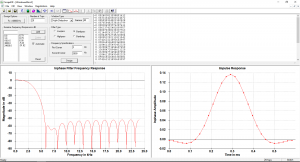Ram’s Status Update for 11/8
- Worked with Will on getting the 2 mic set-up to work with the breadboard mics, tuning the parameters so that the estimated angle did not unecessarily react to noise while reacting correctly to human voice, and testing that it worked correctly for a 180 degree angle range.
- Added some code to address a noticed issue of the angle estimate being very jerky when transitioning from one angle to another (e.g. when the person is moving). This code does some averaging over recent samples to smooth the angle estimate, and only outputs a confident angle when the recent estimates don’t jump around too much (tested, does not completely work, need to tune some parameters and make it work).
- Added some code to integrate the OLED functionality with the direction-finding functionality (untested with the OLED).
To-Dos:
- The smoothing code does not yet work – some more debugging needs to be done on this.
- To test whether the code to integrate with OLED works, need to meet up with Leon and connect the OLED with my board to check.
- Need to add in two more mics, and code in order to reliably distinguish which mics are faced towards the direction of sound. May have to add more, depending on how well we can do this (but it seems that 4 is good as of now).
- Ideally, we’d like to more rigorously test that we meet the 15 degree resolution in the static case (of someone being stationary and talking). This seems to be the case, but we haven’t really rigorously measured out the angles exactly.


